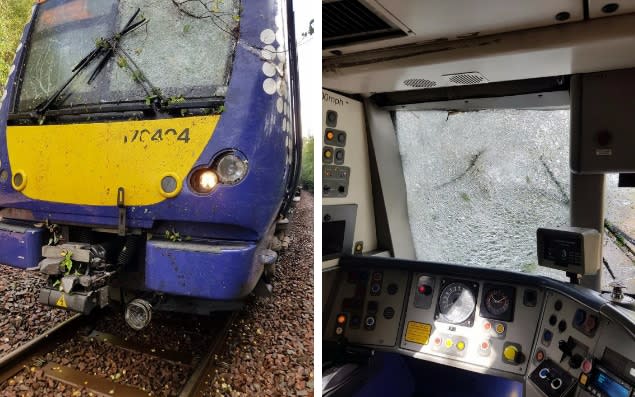HM Chief Inspector of Railways says more trackside trees should be chopped down after his journey home was delayed by Storm Ali damge

The Chief Inspector of Railways has said Network Rail needs to chop down more trackside trees after his train journey was delayed by damage to tracks caused by Storm Ali.
Ian Prosser CBE, HM's Chief Inspector of Railways for the Office of Rail and Road, said his Caledonian Sleeper up to Glasgow from Euston was cancelled on Wednesday night at the last minute after a storm caused dozens of trees to fall on tracks in the North of England and Scotland.
He told The Telegraph that “more needs to be done” to stop this from happening, and said “Much has been done already by Network Rail but very much more needs to be done to get back to where we need to be.”
Rail workers toiled overnight to remove felled trees from the tracks, with one commenting: "I've been down on the ballast with a piddly little saw chopping up some branches that were foul of the line. Thick enough to put a windscreen in I'd say. Do we actually want to kill a driver before Woodland Trust own up to having got it wrong?"

BBC presenter and rail historian Tim Dunn said Network Rail has not felled enough trees, putting passengers at risk.
He told The Telegraph: "Not quite enough tree felling - or woodland management appropriate for a modern rail network - has taken place along some of our rail infrastructure in recent decades. That's led to over-growth which, understandably, the public have become used to.
“The public often consider it as permanent woodland, whereas it's a massive hindrance to the safe and timely operation of today's modern railway...Storm Ali has shown how trees too close to the line can be incredibly dangerous.
"The rail network’s job is to run trains, not to be a woodland. And Network Rail’s job, enforced by the rules of the government’s own Office of Rail and Road, is not to provide woodland habitats, but to operate its estate in as practical way as possible to provide a safe operating environment for the trains, staff and passengers."
Network Rail has been under pressure by a campaign by the Woodland Trust, which opposes the cutting down of the ten million trees near train tracks - but dangerous instances of fallen trees have increased tenfold in the last decade.
Thanks to everyone who has fed back and expressed support for our teams on the front line during #StormAli.
It was a tough day yesterday but the #RapidResponse teams & #ChainsawGangs worked flat out to protect the network & to get things moving again as quickly as possible pic.twitter.com/8fK7bLW5rE— NetworkRail Scotland (@NetworkRailSCOT) September 20, 2018
Fallen trees caused 681 hours of delays to the railway in 2017-18, a tenfold increase on the 70 hours of delays a decade earlier, according to figures obtained by The Times. There were also 1,200 reports of trees or large branches falling on tracks, causing delays and cancellations in the last year alone.
Network Rail said there are no plans to change their tree felling strategy following the damage from storms and commented; “We continue to engage fully with the government’s review. We see this review as an opportunity to explore how we can better apply our own examples of good practice across the country and find new and improved ways of managing our lineside environment while ensuring the continued safe and reliable operation of the railway.”
The Woodland Trust responded to criticism, and said: "The health and safety of rail passengers and staff is paramount, and we support the management of lineside habitats including the felling of trees when needed. However we believe Network Rail can do more to recognise the value of their estate."

 Yahoo News
Yahoo News 